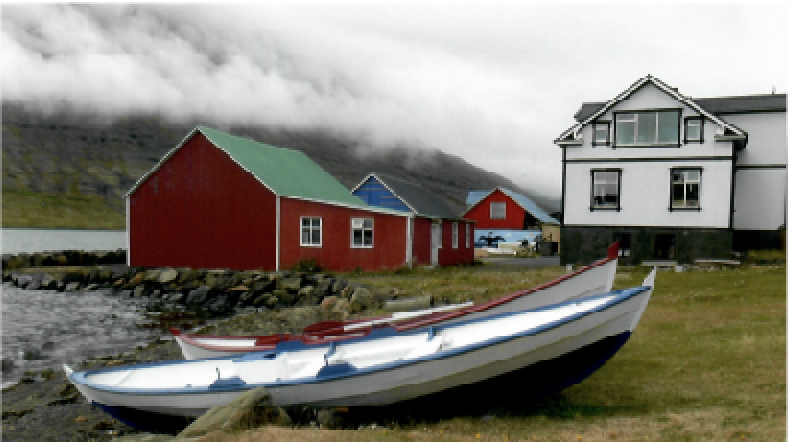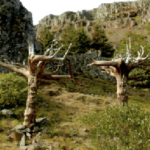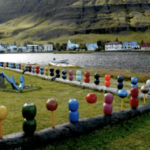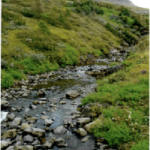It was by default that our family visited Iceland in August. My wife and I, our children and their spouses had planned a trip to France to celebrate our 65th wedding anniversary. Covid stopped that as Europe closed its doors. By 2021, though, Iceland was welcoming visitors. Tourism is one of the country’s economic drivers and it’s an easy trip as international travel goes. So, we canceled France, spent two hours flying to Chicago then five more going on to near Reykjavik.
Our short visit proved one thing: Iceland is a remarkable place and well worth taking a look.
Iceland considers itself part of Europe. It is one of the world’s largest islands, almost half the size of Kansas, though its population of 369,000 is less than that of Wichita. Almost all of its residents live either in Reykajavik, the world’s northernmost capital, or in coastal fishing villages.
Its recorded history goes back a ways. Wandering Norwegian Vikings settled there some 600 years before Columbus came to North America. By 920, it had formed a national assembly, making it one of the oldest governments on earth.
But civics lessons aren’t why most people visit. It’s called the “land of fire and ice” because it is basically a volcano with glaciers. Its rugged landscape was formed by natural forces that continue even now.
Iceland’s welcome mat came with some serious restrictions. Largely spared from Covid at first by its isolation, the influx of travelers started bringing the virus. By late summer, the CDC classified its epidemic as a Level 4, meaning unnecessary travel there is discouraged. Our cruise line responded with strong measures. It required proof of completed vaccination and a negative Covid test made within 48 hours of starting the trip. It cut its passenger total by a third to ensure social distancing. Masks were required outside staterooms except when eating. Temperatures were taken each day, and all passengers and crew were tested for Covid every day.
While these measures helped us get there, our activities there were still curtailed. My favorite pastime when overseas is walking through towns to see how people live away from obvious tourist spots. That was not allowed. We were limited to guided tours that reduced some of the spontaneous sights international travel provides.
Yet it was still fun. In Europe, visitors usually see cathedrals and castles. In Iceland, it’s thermal springs and waterfalls. Because of active volcanoes, water coming from the ground is about 150 degrees. It’s piped throughout the country, providing heat for 95 percent of the buildings. The waterfalls generate some of the world’s cheapest electricity. That led to a flourishing aluminum industry, which uses massive amounts of energy. In Iceland, it’s almost free.
Beyond heating and electric power, almost everything is expensive because it has to be imported. Fish are the exception. Since Iceland was discovered, it has relied on the oceans to provide food and exports. During World War II, which largely spared the country, almost all of its 300 casualties were fishermen on boats sunk by German submarines.
Weather was a delightful contrast to Wichita’s. The hottest daytime temperature on our trip was 61 degrees. Even with summer nearing its end, the sun rose about 5 a.m. and set after 9 p.m.
In mid-summer, there are 24 hours of daylight. Many towns stage golf tournaments starting at midnight. Golf is a national passion, with even the smallest towns boasting two things — an airport and a well-tended golf course. The sport was introduced to Iceland during World War II by American and British soldiers who were stationed there.
The country has a Coast Guard but no other military, although it is a member of NATO. Police are not armed except for an elite unit called the Viking Warriors. That group’s main job seems to be protecting people from ravenous polar bears who show up after weeks at sea on icebergs that drift to the island. So peaceful seems Iceland that Reykjavik’s red lights on traffic signals are shaped like hearts.
The landscape is barren and largely one color: tan. The soil is lava turned to rugged rock. When the Vikings arrived, Iceland was covered with trees. Now, less than one percent is forested. Mostly, waist-high shrubs remain. One guide told us what to do if ever lost in an Icelandic forest: “Stand up.”
Still, the tundra and massive brown rocks are beautiful. One highlight of our trip was a seven-mile hike up a 1,000-foot cliff and back. Climbs like that are fairly easy. Iceland starts at sea level, meaning there’s plenty of oxygen. After reaching the top of the cliff, we still were at a lower elevation than is our house in Wichita.
Having seen some of Iceland, would I go back? Yes, but I’d spend more time in the interior and wait until early fall when the northern lights are at their peak. If Covid can be kept at bay, travel is still one of the great gifts we have.
Contact Bob Rives at bprives@gmail.com.












